Rhododendron in Smoky Mountain National Park
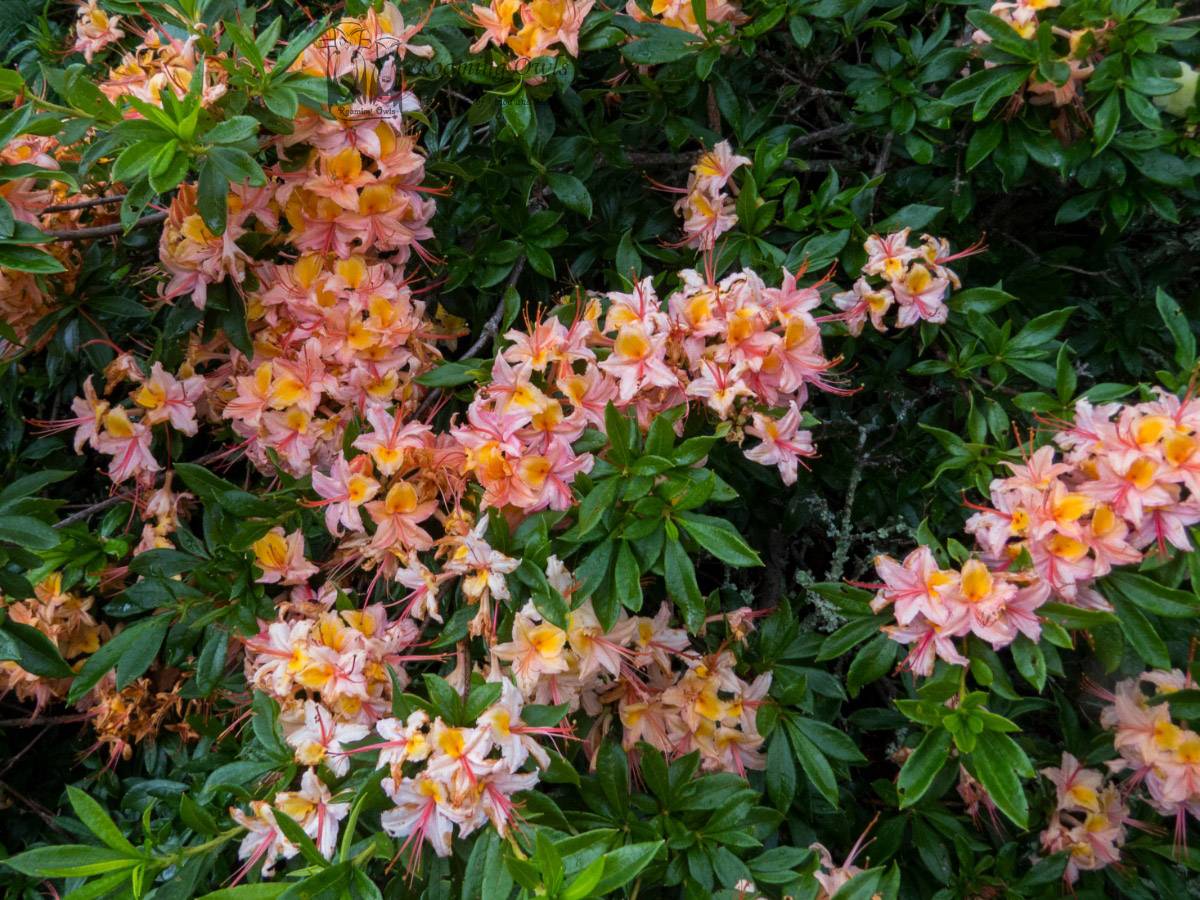
While staying in the US the only aim we had is to see as many wildflowers , birds and butterflies before we headed back to India. So every weekend we would be travelling somewhere in search of them. Sometimes it was nearby and sometimes it involved catching a flight or driving overnight. We look at google maps to decide our destination and based on the size of the forest we decide the visits. In the first year of US stay, our reach was not more than 2 hours of driving but slowly we expanded , often by driving overnight. Infact smokies was one such destination that we never bothered the first two years but once we found it, we ended up going there for 4 times. Each time it would be a 10 hour drive to reach our final spot but we never flinched a muscle because of the immense biodiversity there particularly rhododendron flowers.
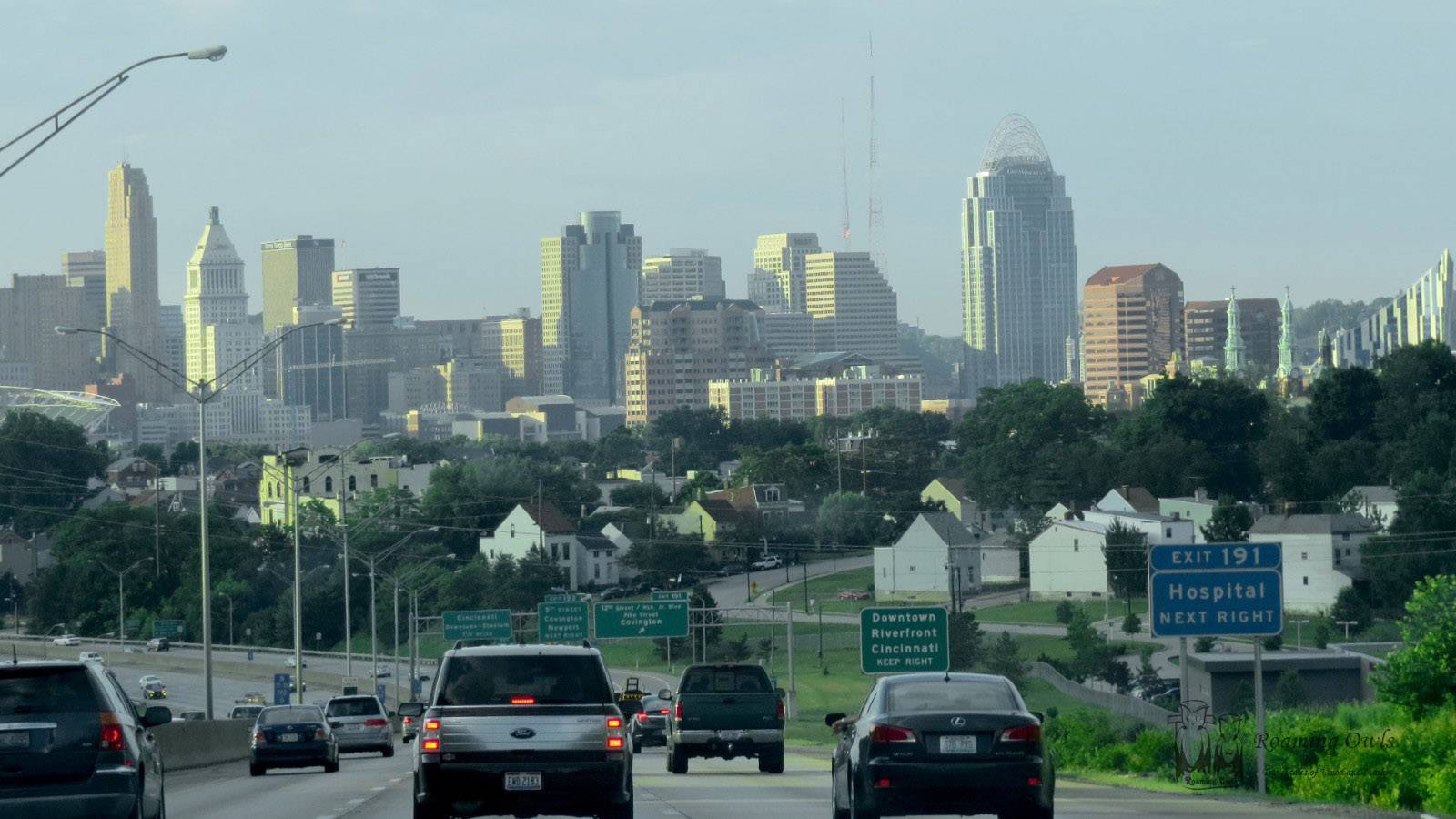
The drive to smokies took us past the capital of Ohio, columbus. The skyline is a impressive sight but our little plants are more attractive to us.
Rhododendron are flowering bushes that bloom in spring for about a month. They generally form patches inside forest and thus form a flower carpet when in bloom. Smoky mountain national park is famous for its rhododendron blooms with Rosebay rhododendron the main species. Our aim was to see all the nine species : rosebay (white) rhododendron, Catawba (purple) rhododendron, flame azalea, sweet azalea, Cumberland azalea, small-leaved azalea, pinxter-bush, pink azalea, and clammy azalea. Though it would be tough we would rather give it a try 🙂
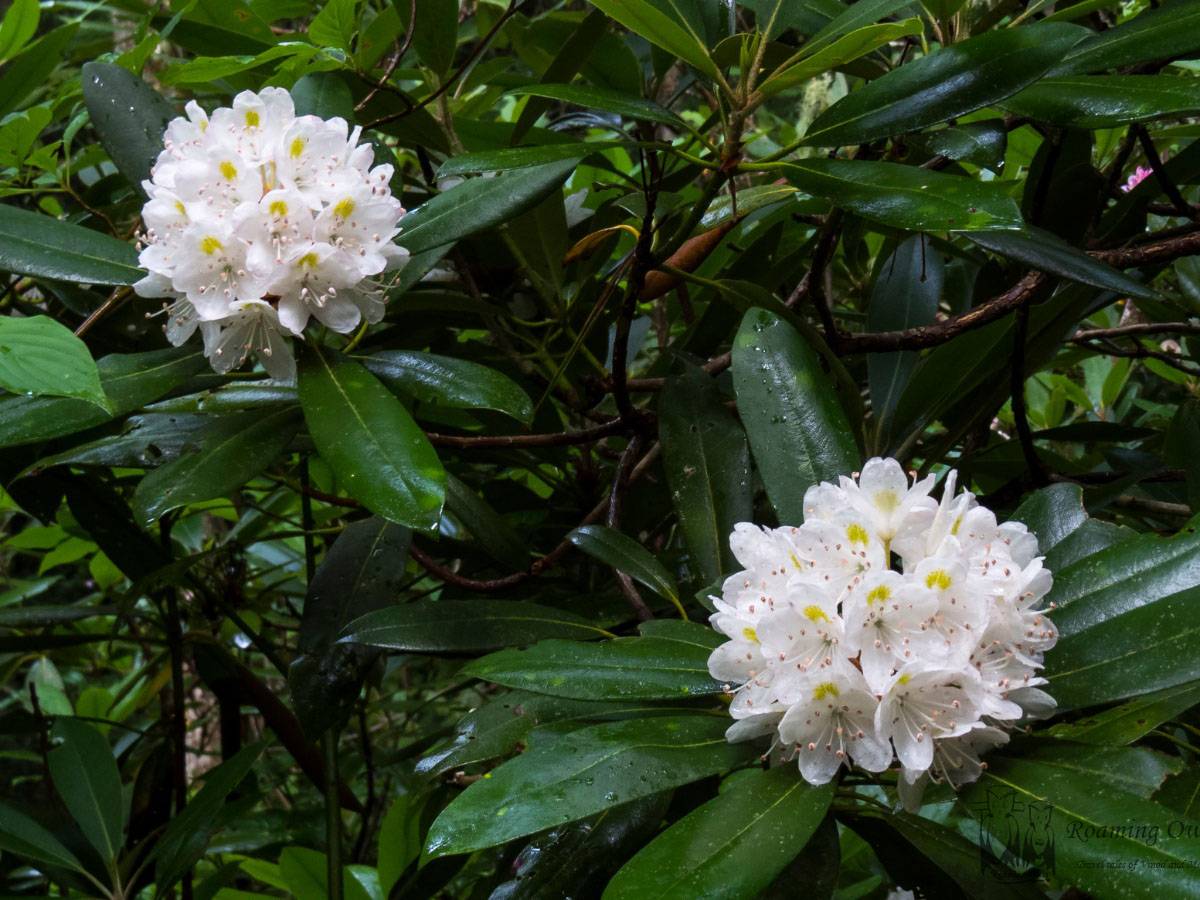
Rosebay rhododendron is the most frequently occurring and dominant species of Rhododendron in the southern Appalachian region.
Hiking in Smoky Mountain National Park
After the heavy sleepless driving we reached the trailhead and parked our vehicle. The trail was around 11 miles one way and it involved some steep sections as well. We started the climb at first light as always and after a couple of miles we came across a signage which was put up by the forest department there. It read ” aggressive bear . Beware “. The smokies mountain is also famous for it’s bears and spring is the season they have cubs and we had to be extra cautious. We still proceeded to see the flowers. As we walked the trail we noticed other wildflowers like Chimaphila maculata but we just clicked and kept walking as our minds were fixed on rhododendrons.
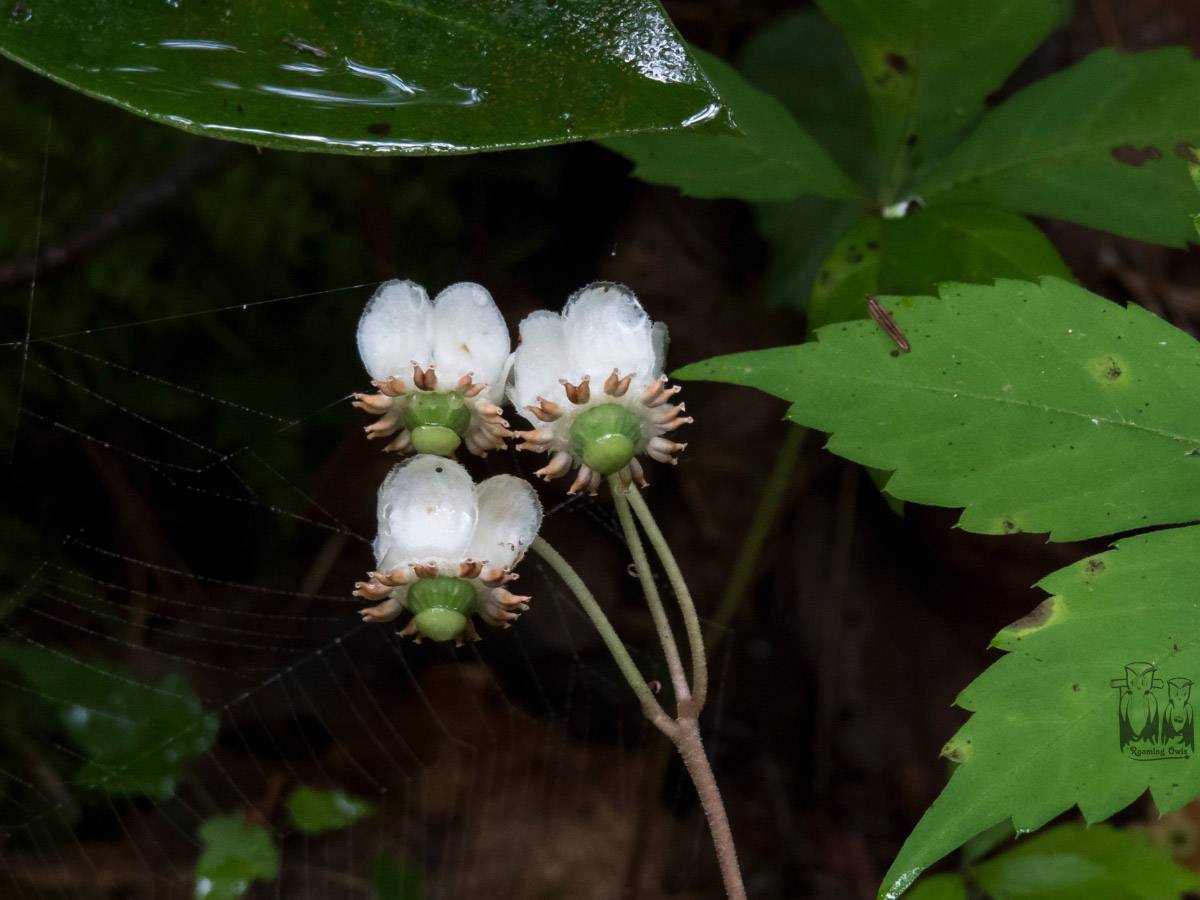
How can a flower have so many names ?! Spotted Wintergreen, Pipsissewa, Striped Wintergreen, Striped Prince’s Pine, Striped Prince’s Plume, Dragon’s Tongue . I would rather stick to scientific in cases like this Chimaphila maculata.
As we further climbed, we came across the open patch we were looking for. The upper reaches of the mountains were covered with grass and the occasional rhododendron bushes. The place was filled with mist when we reached there but after sometime it slowly cleared showing its beautiful flowers. We started clicking the different varieties and we were able to spot 5 out of the nine here .

Catawba (purple) rhododendron is the second most common species found inside smoky mountain national park.
After the roaming and searching and climbing, we were pretty much exhausted and the lush grass looked very tempting for a small rest. There were several short trees with canopy like an umbrella and we sat beneath one of them. While it was very relaxing , we had to have an eye for the bear. Frankly, if the bear had come we did not have the strength to get up and run. But enjoying the moment we just relaxed. Then suddenly the mist cleared but it started drizzling.
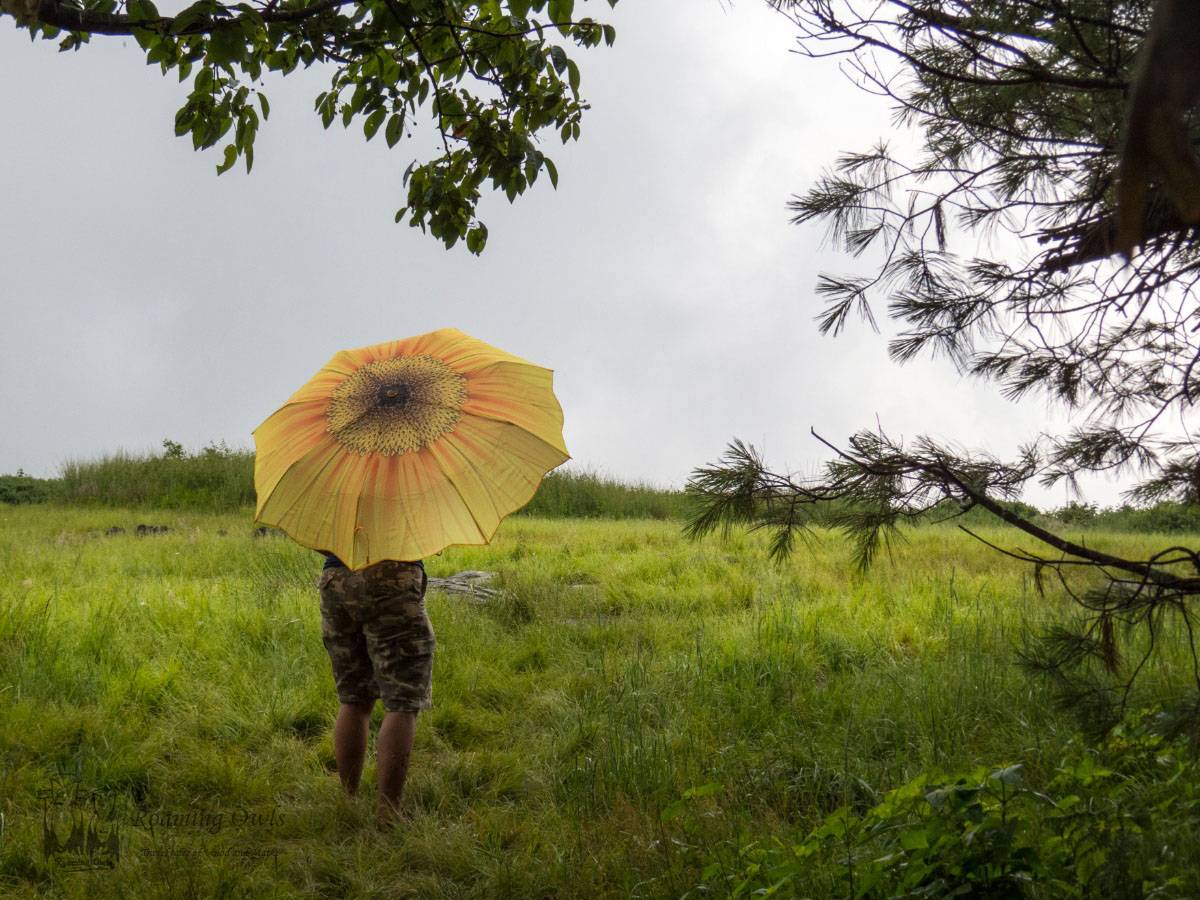
The smokies are part of the appalachian range of mountains which get considerable rainfall through out the year. we had come prepared with an umbrella but not a poncho which we would regret in a little while.
The moment it started to change from drizzle to rain we knew that we have to get down fast. The trail we walked had several places which was slippery and difficult to walk and add rain to that recipe we will surely face tough odds. The return journey was indeed what we expected – a leg breaker ! The trail became all slippery as the rain became a torrential downpour and did i mention that we had only one umbrella! We kept all our cameras in one bag and carried the umbrella to protect it, but by the time we reached down we were drenched. Just how many times we get drenched in rain. Awesome ! Anyway we got five out of the nine.
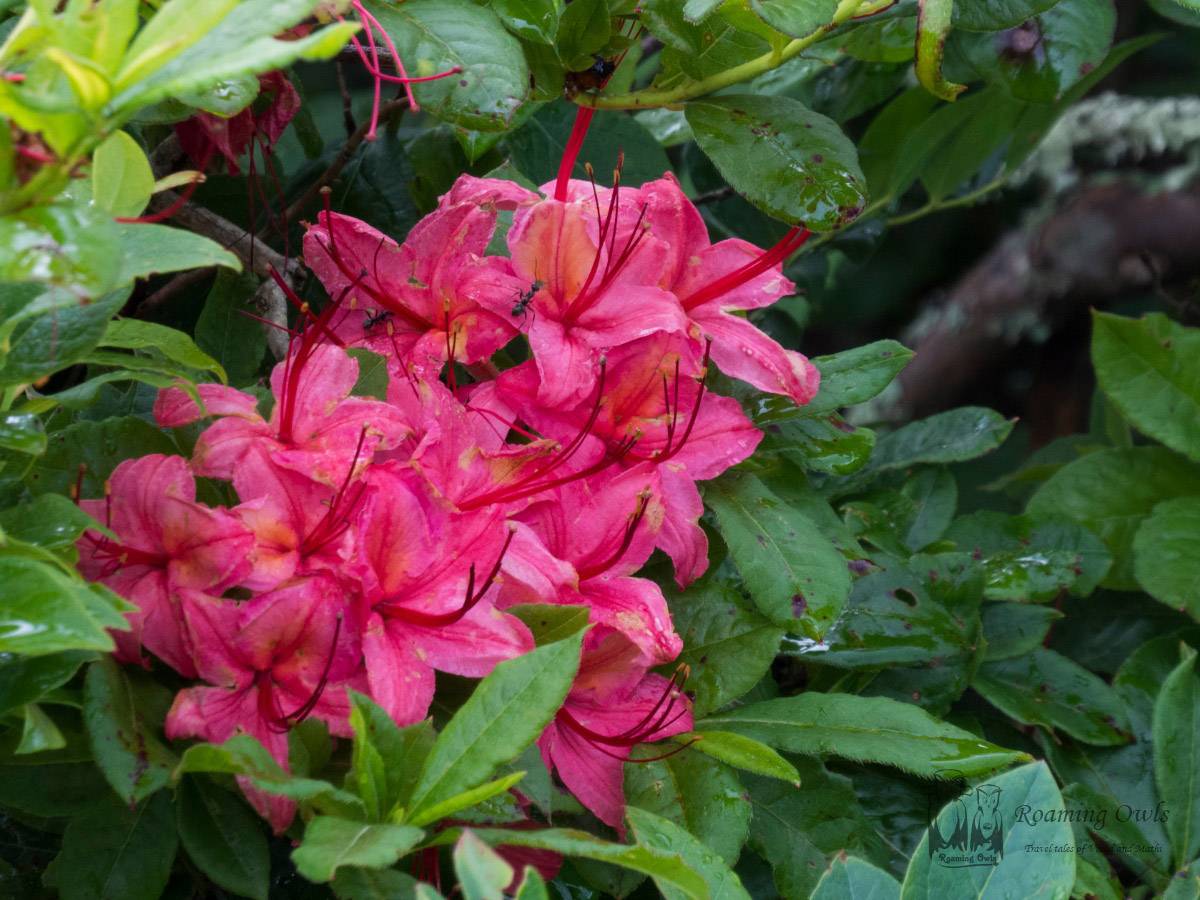
Cumberland azalea was also in the trail
We switched on the car heater as we were shivering in the cold rain. Even change of clothes did not help the shivering. We also had blisters on our feet as we had to walk for nearly 8 miles with completely soaked shoes. Many would call us insane for doing all this for seeing flowers but our life is about nature and its beauty and it is all worth the pain. We were in no mood to setup camp and we just crashed in the car itself. The next morning we had planned a short walk to a spot where we had earlier spotted several new species. The morning was pleasant after the rains yesterday. The birds were singing and the sun shining.
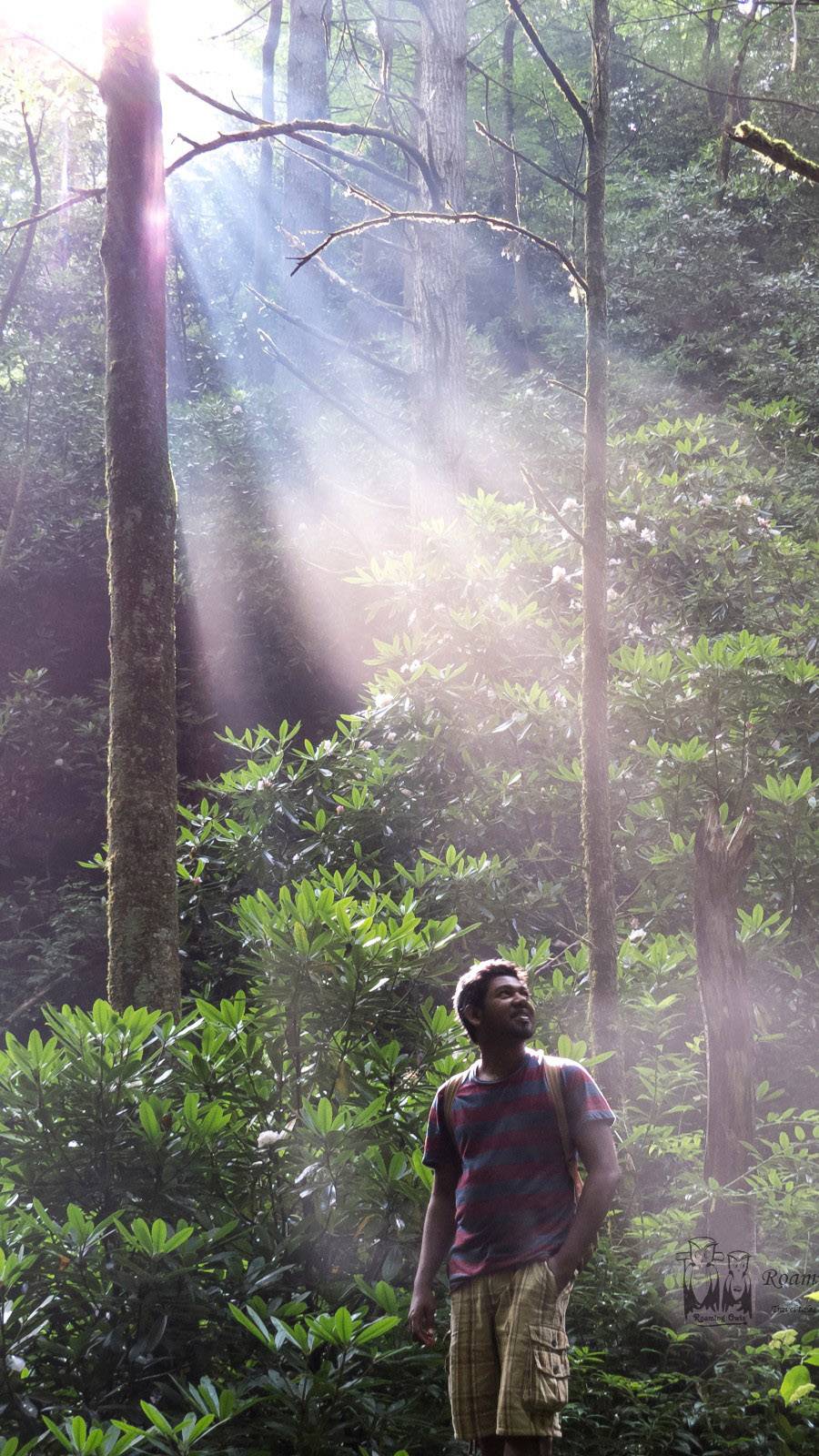
Sunrays filtering through the forest canopy of smoky mountain national park.
The walk was refreshing and all tiredness of yesterday was gone. We had packed some food for morning and we ate them sitting near a waterfall. After some birding, we decided to visit a part of the park we had never visited before. It was a tourist spot and so we kind of avoided that from the beginning. Now that the spring was over, we thought this might be the last time we see smokies and so we decided to give that a shot. The route was scenic with pines all over the place. The effect of global warming was visible as several pine trees were dead. The death of the trees was due to a beetle infestation. Because of the warmer climates the beetles are able to survive the winter and hence the dead trees.

Dead pine trees because of beetle infestation. Due to global warming the beetles survive the winter and feed on the tree the coming year also.
We reached the spot where everybody was taking selfies and slowly slipped away to a side road and to our joy we found the much awaited flower. We had all but given up on this flower as it should be blooming only next month. May be global warming made it bloom a month earlier because of the warm climate. We were little confused but we were happy to see the flower. It is not every other day that you get to see the purple fringed orchid and that too the rarer lesser purple fringed orchid.
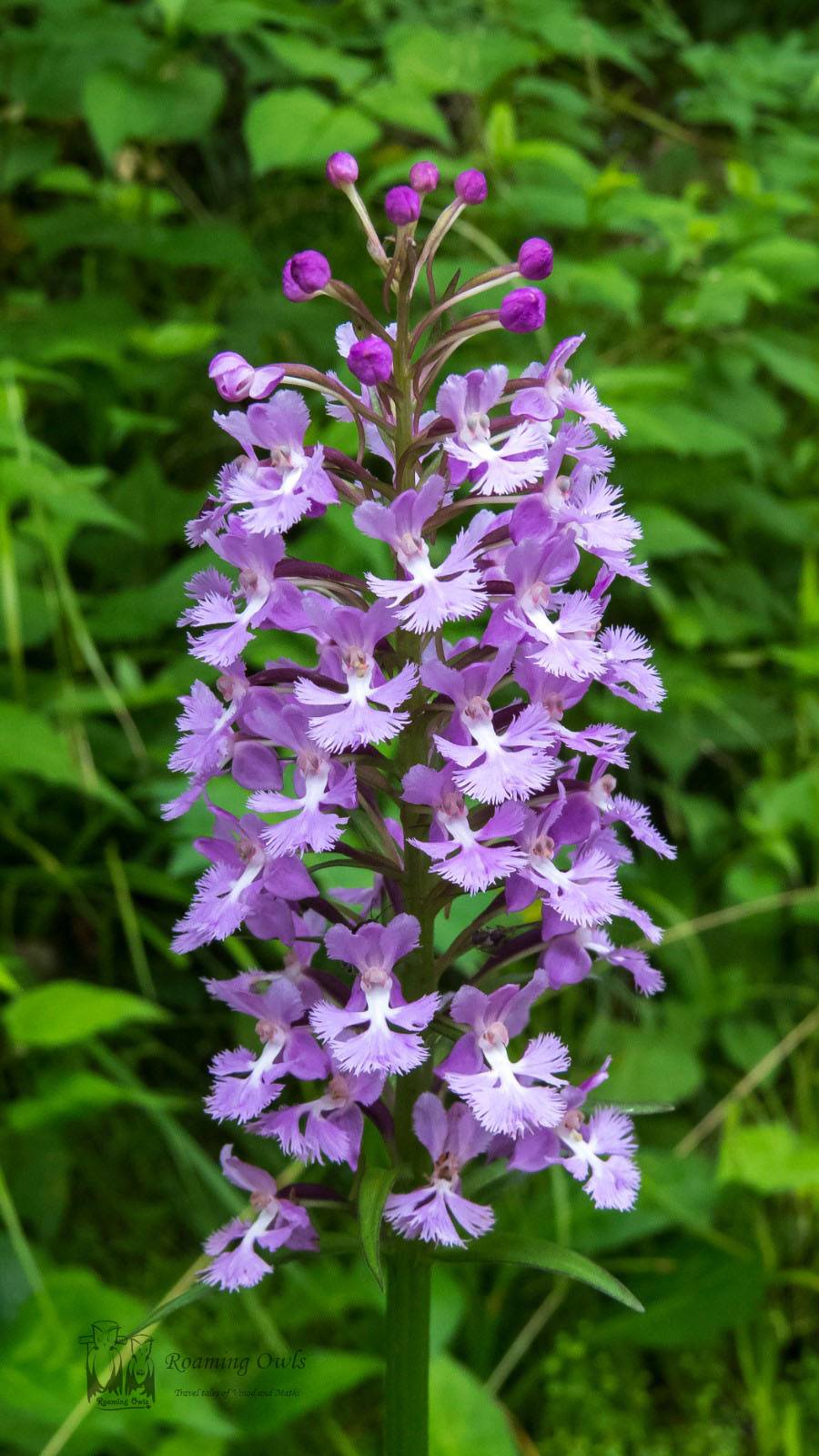
Platanthera psycodes, commonly called Lesser Purple Fringed Bog Orchid is primarily a wetland species, that can be found in swampy forests, marshes, moist meadows, and along riverbanks.
After the orchid we were satisfied 200% and what to do when you are that satisfied ? Start the 10 hour drive back with a chocolate milkshake! We spent the driving talking about the amazing Smoky Mountain National Park.
Related post
Yumthang valley – A walk in rhododendrons